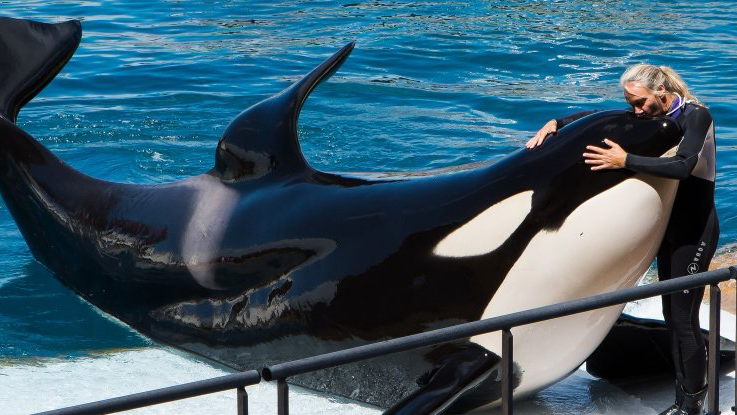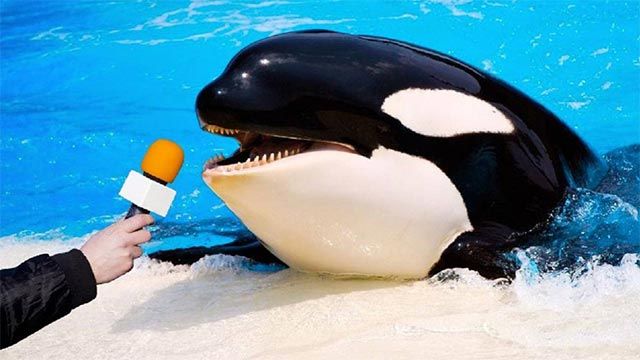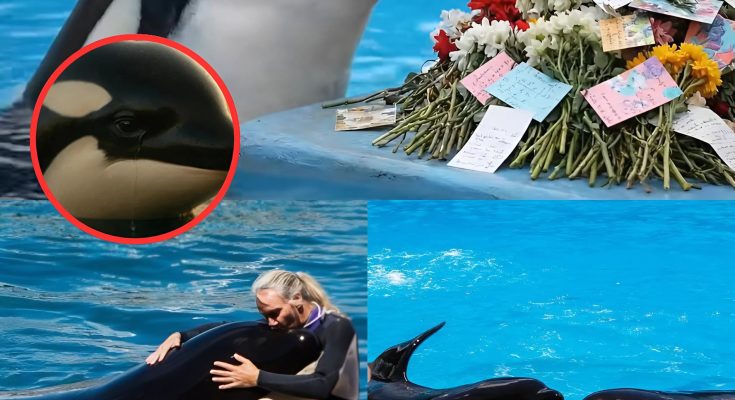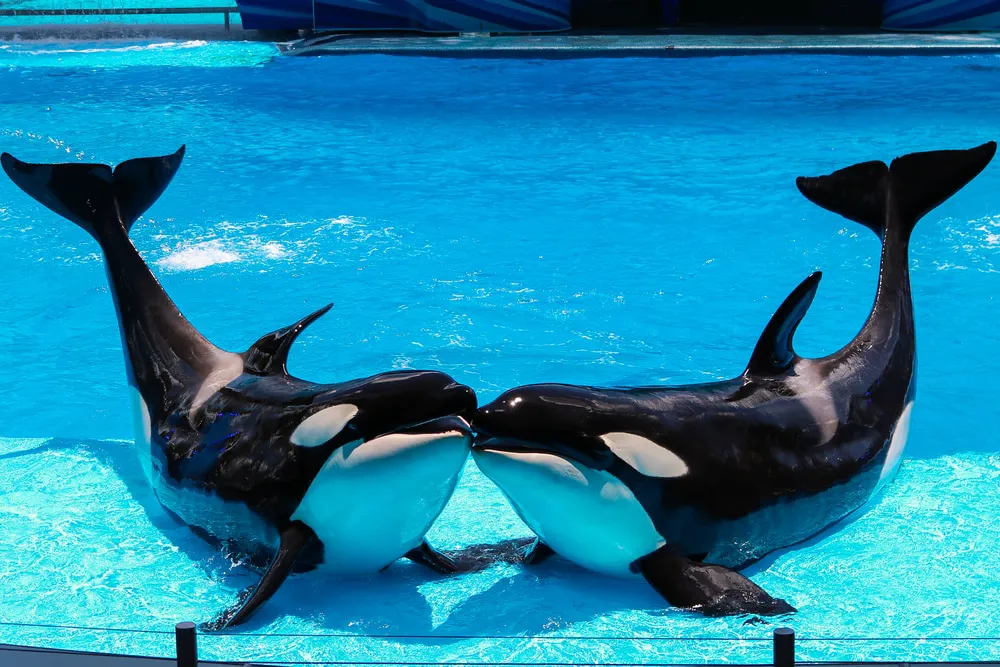The sound was unlike anything visitors had ever heard before — a piercing, mournful howl that rose from the water and echoed through the cavernous arena of Oceanic Park. Normally the site of applause, laughter, and acrobatic performances, the tank had been transformed into a stage of grief. The dolphin, famous among fans for its intelligence and playful stunts, writhed and slapped the water as a white coffin was carried toward the poolside. Inside was its trainer — its friend, its partner, and, in many ways, its family.
What unfolded that day was not just a heartbreaking farewell but also a moment that reignited urgent questions about the mysterious accident that claimed the trainer’s life, the emotional depth of animals we think we understand, and the blurred lines between entertainment, companionship, and exploitation.

A Bond Forged in Trust and Time
The relationship between a dolphin and its trainer is not forged overnight. It is the result of years of shared routines, hand signals, rewards, and, above all, trust. Witnesses to their daily sessions described a near-telepathic connection: the way the dolphin would anticipate gestures, the way the trainer’s voice carried across the water, and the way both seemed to move as one.
Marine biologists note that dolphins are among the most socially sophisticated creatures on Earth, capable of recognizing themselves in mirrors, learning complex tricks, and even developing unique whistles — a kind of “name” — for each individual. The dolphin in this tragedy did not merely lose a handler. It lost a companion it had chosen, someone who became part of its tightly woven social fabric.
When the coffin appeared, its reaction left no doubt. Tail slaps, piercing vocalizations, frantic movements — all signs that experts recognize as stress, agitation, and grief.
The Accident That No One Saw Coming
The trainer’s death remains clouded in uncertainty. Official reports describe it as a “mysterious accident” that occurred during routine maintenance of underwater equipment. No witnesses have spoken publicly about the final moments, and investigators have remained guarded about the evidence.
Rumors swirl. Some suggest electrical faults in submerged machinery, others whisper of an undetected medical collapse. Park officials insist safety protocols were followed, but colleagues admit that working closely with powerful marine mammals and complex systems always carries risk.

Yet what unsettles the public most is not just how the trainer died, but why the details remain so scarce. Families of staff and animal rights groups have called for a transparent inquiry, demanding accountability from a multi-million-dollar industry that often places spectacle above safety.
The Human Dimension of Loss
For his colleagues, the trainer was more than a coworker — he was the emotional anchor of the park. Known for his patience and almost uncanny ability to soothe even the most stubborn dolphins, he had earned respect not only as a professional but as a deeply empathetic human being.
“He loved them,” said one fellow trainer through tears. “Not just as performers, but as souls. He always said they understood us more than we understood them.”
The park community has been shattered. Performances have been suspended indefinitely. Staff members are grieving privately while tending to dolphins that, like the one who cried out at the coffin, now exhibit signs of confusion and distress.
The Science of Grief in Animals
For decades, the scientific community resisted acknowledging animal grief, dismissing it as anthropomorphism. But mounting evidence — from elephants lingering over bones of their dead, to primates carrying lifeless infants, to whales refusing to abandon stillborn calves — has forced a reconsideration.
Dolphins, with their advanced brains and intricate societies, stand at the center of this debate. Documented cases show dolphins surrounding sick companions, lifting them to the surface to breathe, or emitting distress calls when one of their pod dies.
What unfolded at Oceanic Park may be the clearest public demonstration yet. For millions watching online, the dolphin’s cries were not performance or coincidence; they were a raw, undeniable display of mourning.
“People underestimate the cognitive world of dolphins,” explained Dr. Helena Marques, a marine ethologist. “What you saw was grief. Pure grief. And the most haunting part is, we don’t know how long it will last.”
Beyond the Tank: The Ethical Question
The tragedy has also reignited a fierce debate over the ethics of keeping such creatures in captivity. Critics argue that confinement robs dolphins of their natural freedom and emotional bonds with their pods, making them overly dependent on human trainers. Supporters counter that facilities like Oceanic Park foster education, research, and conservation.
But this latest incident complicates the argument. If dolphins can form bonds deep enough to mourn human death, what responsibilities do humans bear in acknowledging — and respecting — those emotions? Is it ethical to ask an animal capable of grief to perform tricks for applause?
An Unanswered Farewell
As the coffin was lowered out of sight, the dolphin grew quiet, circling the pool in slow, somber laps. Staff members later said it refused food that evening, hovering near the tank wall as if waiting for the trainer’s return.
The accident investigation will eventually yield facts and conclusions. But no forensic report can capture the essence of what happened that day in the blue tank: the shattering of a bond between two beings who shared a language beyond words.
The trainer is gone. The dolphin remains. And somewhere in the silent depths of the water, a question lingers: do we, as humans, truly grasp the magnitude of the emotional worlds we are piercing when we claim mastery over other lives?




